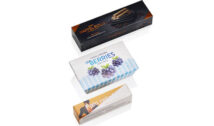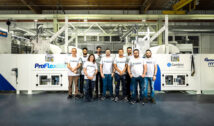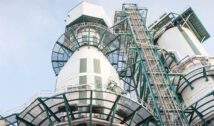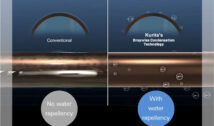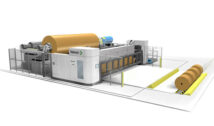
EU Packaging Regulation in the German Bundesrat: Why cardboard is the greener solution
Schumacher Packaging takes a stand on PPWR / Plastic reusable systems in e-commerce increase transport distances, costs and emissions / German politicians miss opportunity to commit to sustainability
As part of the European Green Deal, the EU is pursuing ambitious plans to optimise the sustainability of packaging. This is demonstrated by the new draft of the European Packaging Regulation (PPWR), which was discussed today in the Bundesrat and will have to be implemented by Germany once it has been adopted by the EU. Schumacher Packaging, one of Europe’s largest manufacturers of customised corrugated and solid board packaging (www.schumacher-packaging.com), supports the regulation’s goals to minimise packaging and avoid over-packaging. However, the company emphasises that the planned reusable packaging jeopardises these very goals due to its mixed climate balance. Today, the German Bundesrat missed the chance to stand up for environmentally friendly packaging. Björn Schumacher, CEO of Schumacher Packaging: “Packaging made of corrugated and solid board is a recyclable natural product. This makes them best suited today and in the future to make mail order low emission and sustainable.”
The fallacy of the reusable system: more effort and more emissions
From 2040, the PPWR envisages reusable quotas for large household appliances (90 per cent of packaging) and non-food mail order (50 per cent of packaging), among others – for fashion, electrical appliances and beauty products, for example. Reusable packaging is a convincing idea in theory, as it only has to be produced once and its eco-balance improves steadily with repeated use. However, the latter does not reflect reality. On the contrary: the production of reusable packaging consumes more material and energy than the production of disposable packaging made of paper, cardboard or carton. In addition, a reusable system tends to require larger and inflexible unit sizes as well as complicated return logistics. Recent studies show that the use of reusable systems will increase the volume of lorries used for transport and return transport by 50 to 75 per cent. This means not only higher costs, but also a significantly worse greenhouse gas balance than with corrugated cardboard boxes, for example. Only after more than 20 cycles do reusable boxes achieve a similarly good environmental balance. However, independent studies show that only low return rates can be achieved in e-commerce. Even with a rate of 95 per cent, only 60 out of 100 reusable boxes are left after 10 cycles. The rest has to be re-produced at great expense. “With flexible, individual packaging solutions that avoid empty spaces and save emissions, the packaging industry can make a major contribution to sustainable development,” Björn Schumacher emphasises.
Federal Council misses chance to stand up for environmentally friendly and customer-oriented packaging
Contrary to the Committee’s recommendation, the Bundesrat in its statement today does not advocate a holistic view of the life cycle of packaging in e-commerce. Originally, the Committee on Economic Affairs advocated that paper-based packaging be exempted from the requirements for reusable packaging in the non-food mail-order sector because of the high recycling rates throughout Europe. In its final opinion, however, the Bundesrat dropped this criticism of the current draft of the EU Packaging Regulation. “The Federal Council has missed an opportunity here to advocate at EU level for recyclable, customer- and transport-friendly packaging. For a sustainable, climate-friendly future, new requirements must be designed based on facts,” criticises Björn Schumacher.
Disposable can also mean circular: Paper fibres can be reused up to 20 times
Paper, cardboard and carton are made entirely from the natural and renewable raw material wood. Since mostly broken or thinned wood (e.g. by-products of forestry work) is used, the raw material extraction for corrugated board is a responsible process that does not cause any environmental or climate damage. Processed paper fibres can also be reused up to 20 times, making them a true recycling champion. Schumacher Packaging already produces with 85 percent recycled material and is continuously increasing the percentage through technical innovations. Even in rare cases where individual paper products do not find their way into the recycling process, no environmental damage is caused because corrugated board packaging is completely biodegradable. Thus, although paper and cardboard packaging are considered disposable products, they pass through a natural and residue-free cycle in terms of natural resources.
Recommendation for amendment of the ordinance
With regard to the PPWR, Schumacher Packaging demands that paper-based packaging with an ambitious share of at least 90 per cent recycled material be exempted from the reusable requirements in mail order and large household appliances. “We use a renewable and environmentally friendly raw material that has already been functioning for years in terms of the natural raw material cycle and is established with both consumers and retailers,” Björn Schumacher summarises. The company is continuously working on making packaging even more sustainable and is pursuing the goal of climate-neutral production from 2035. From energy production to supply chains, the family-owned company is committed to a small carbon footprint – for customers and end consumers as well.




